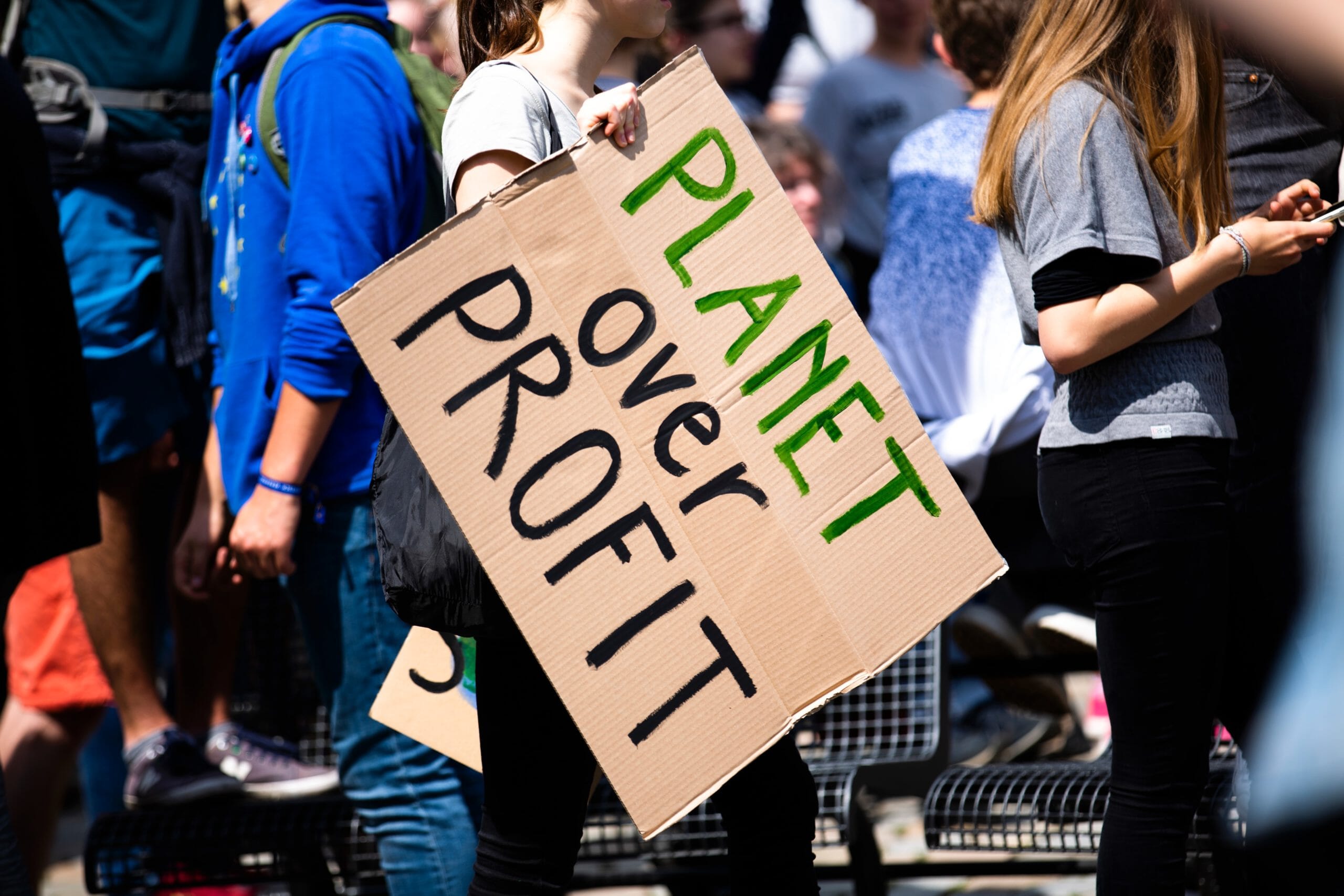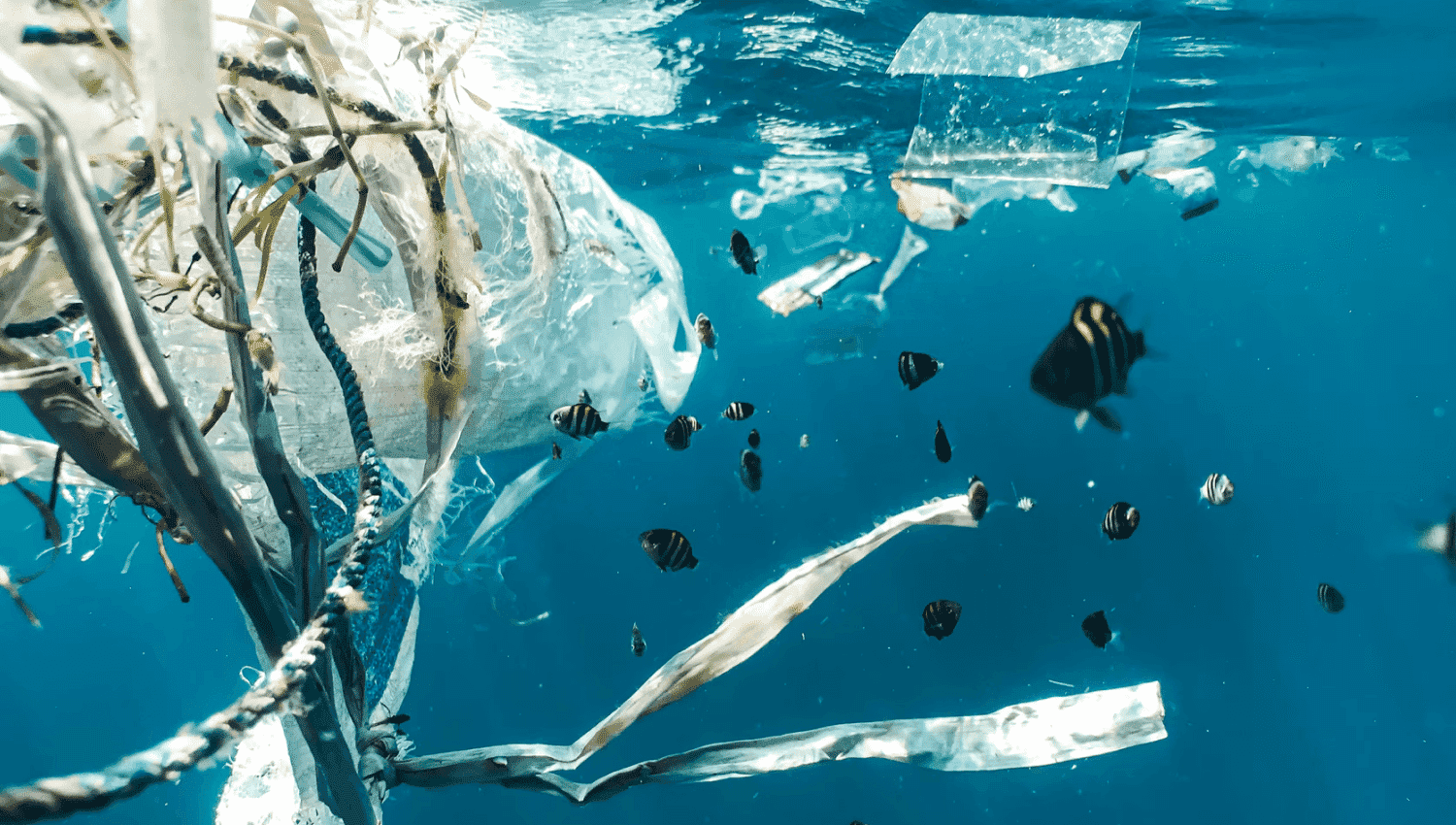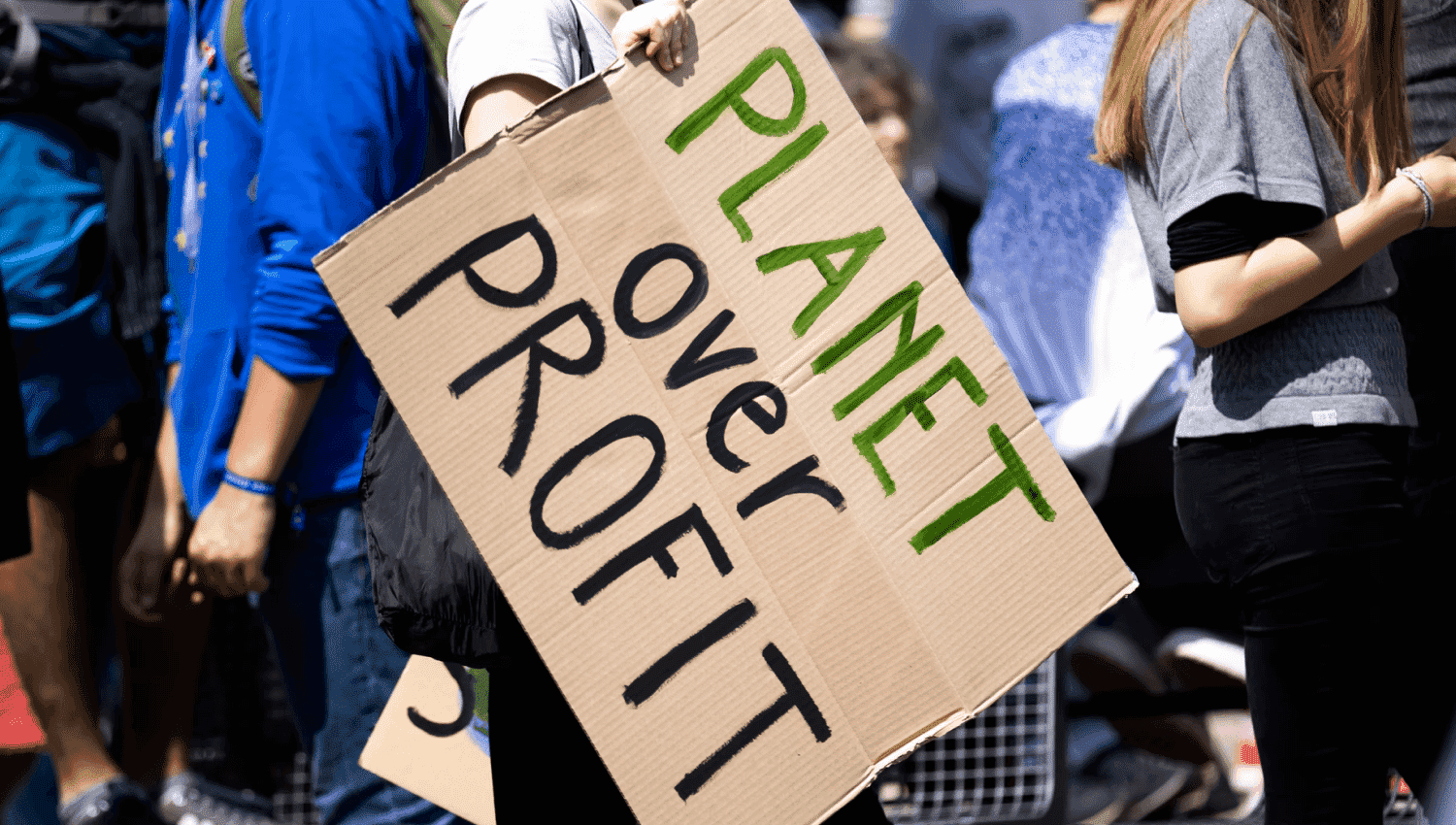In 2019, the Business Roundtable signed a historic pledge that tethered the relationship between companies, CEO’s, and climate change. Thirty days later, unimpressed by the sustainability-related goals previously espoused by major corporations, nearly 8 million people left home, school, and even work to take to the streets and demand action for climate change. Influenced by a younger generation, the cries for action reverberated off the walls of Washington and Wall Street and into boardrooms across the globe.
With the dovetailing of these two occurrences, 2020 was on track to be the year that brands,climate, and investmentcame together.
Then on March 11th, COVID-19 was declared a pandemic by the World Health Organization.
As billions came to grips with the new reality, the brand pendulum shifted away from addressing climate change towards survival – maintaining health, safety and business resiliency.
The “water sustainability” debate transposed into water rationing conversations at the supermarket. “Flight shaming” shifted away from the concerns of burning jet fuel to the risk associated with in-flight virus transmission. Plastic became the cutlery of choice at restaurants.
How the brand conversation changed on Facebook
Highly engaged Facebook posts on climate change from brands in 2019
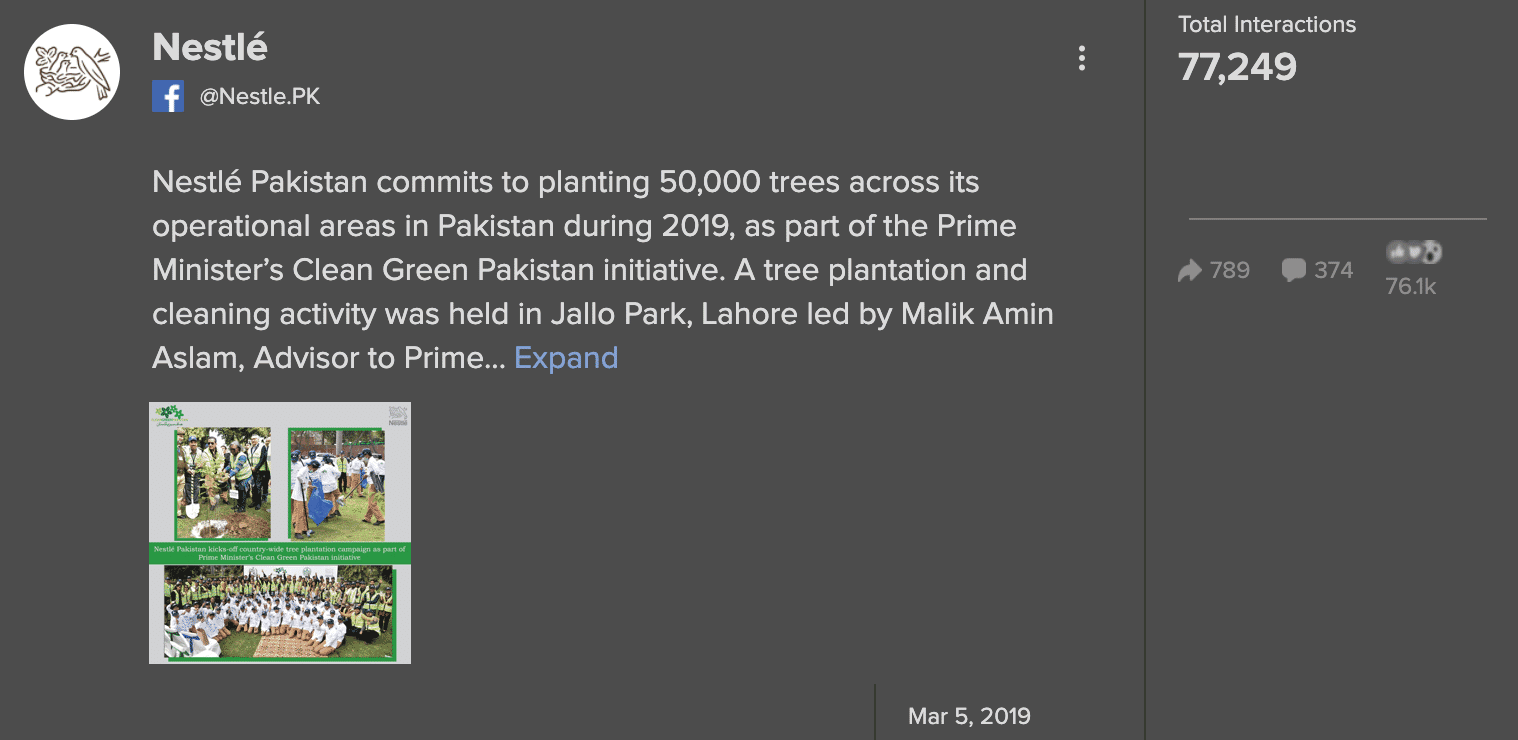
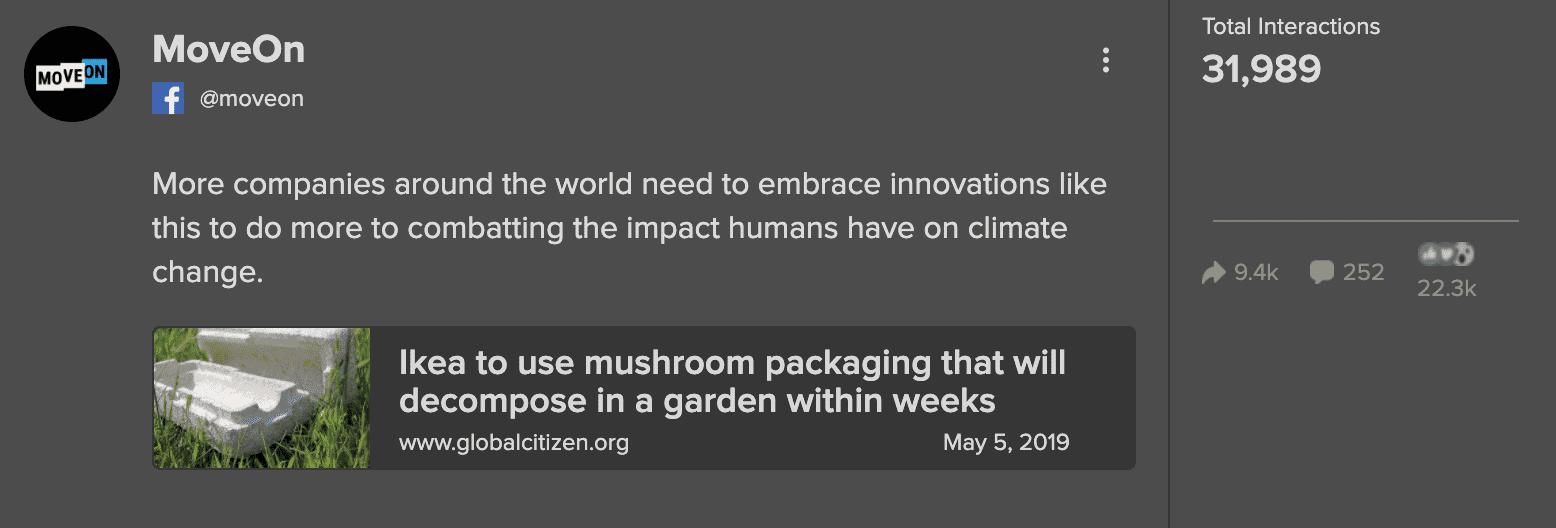

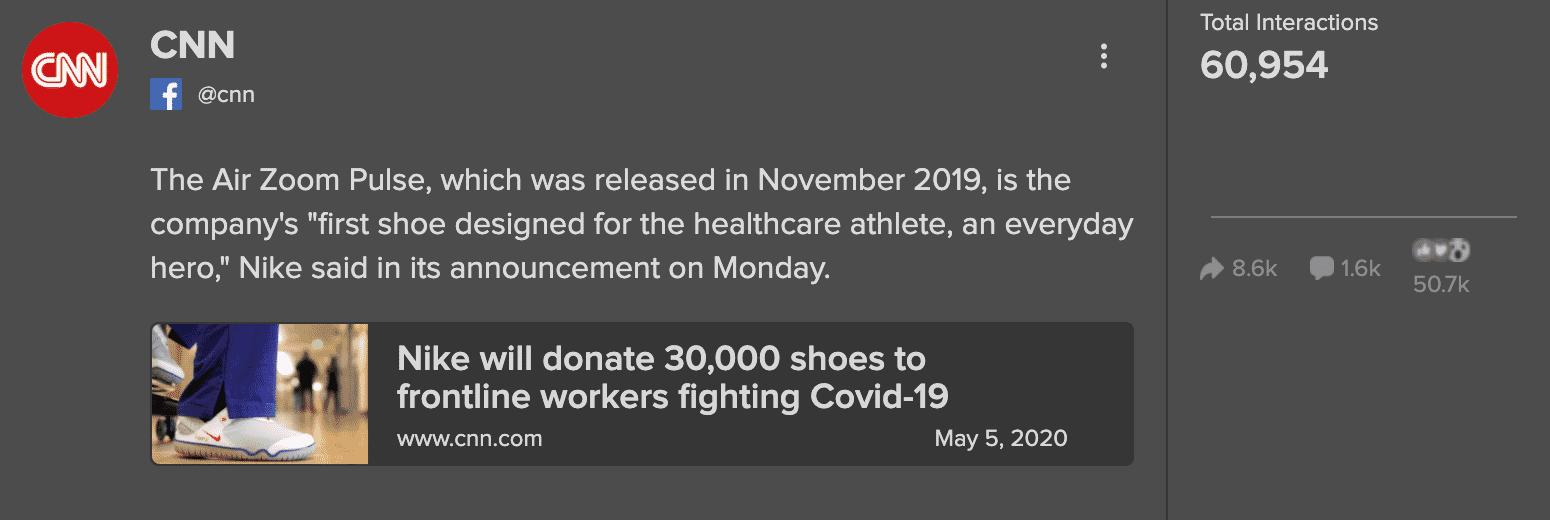
Due to rapidly changing socio-economic conditions, Covid and politics dominated the news cycle and FB engagements around the topic of “climate change” declined by around 55% from 2019 (190M engagements to 85M engagements on Facebook).
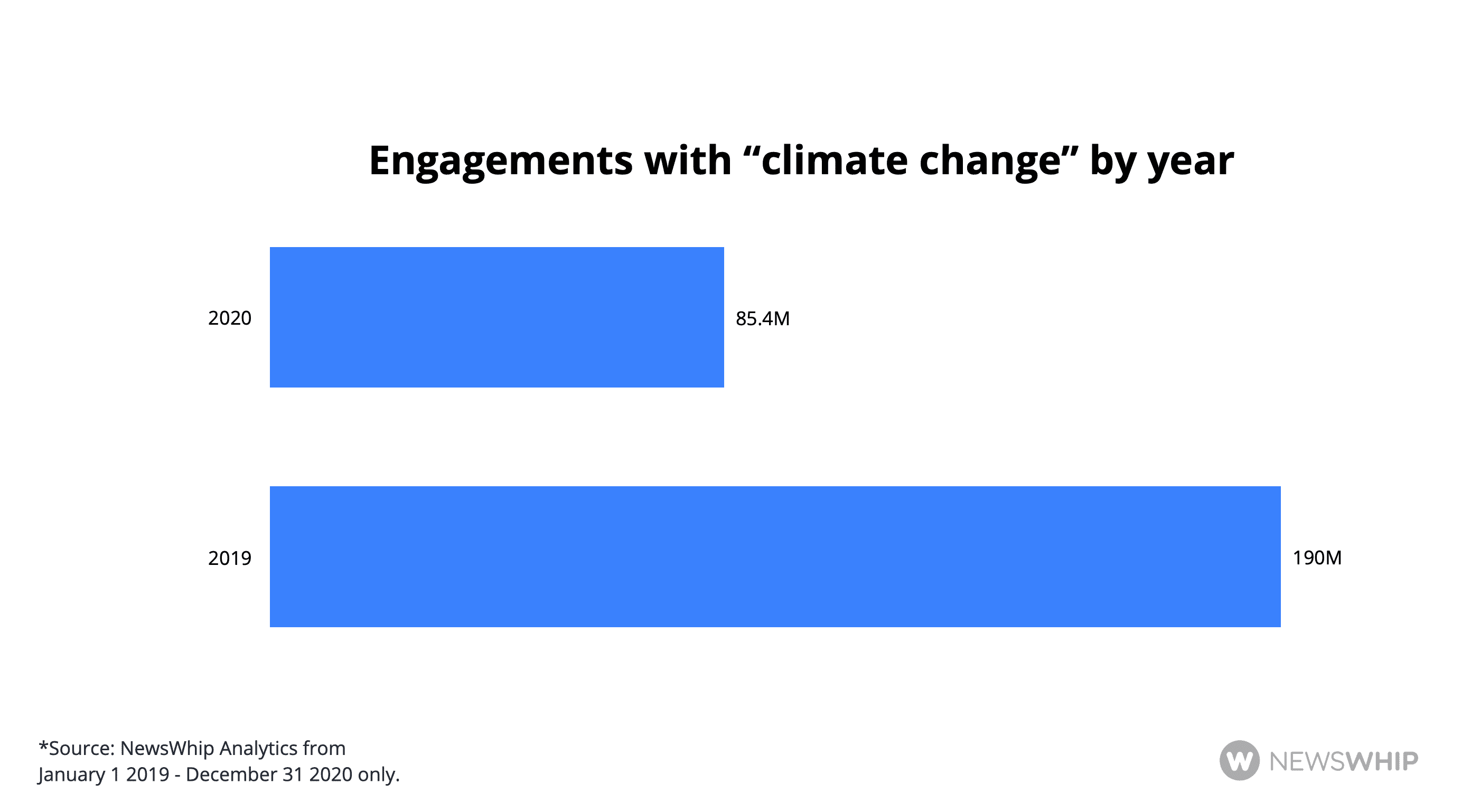
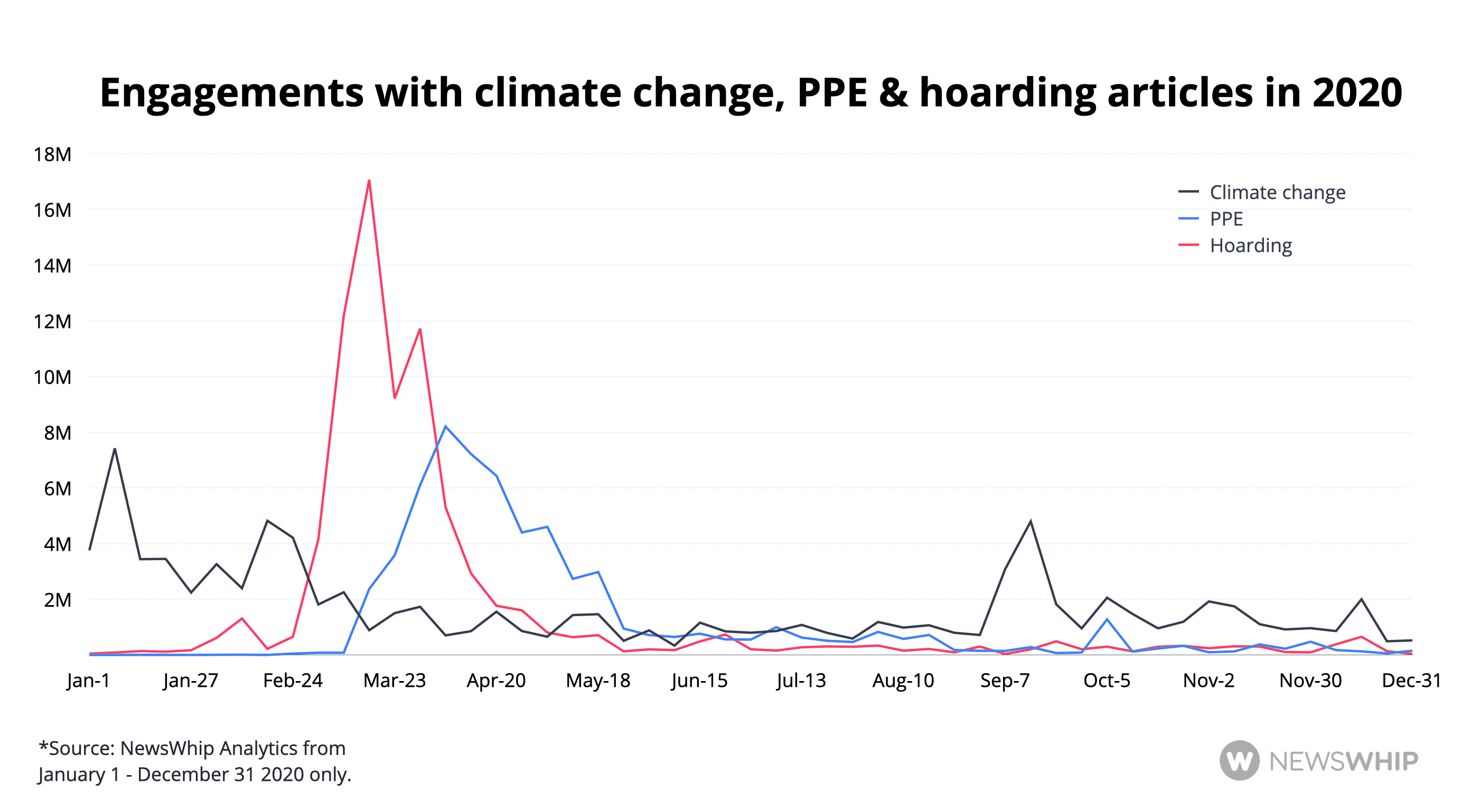
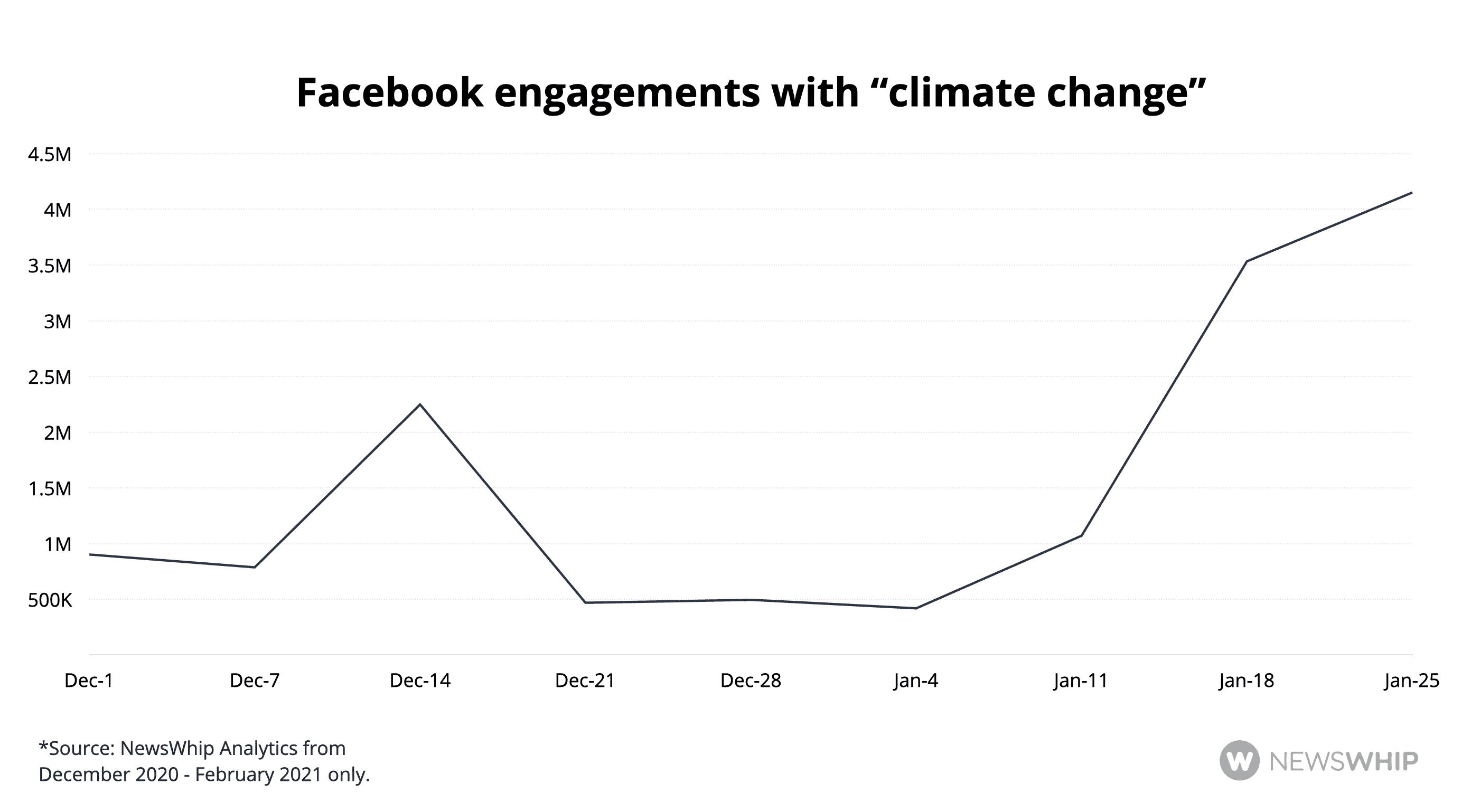
The new front on climate change
From second-hand sales to regeneration and developing a circular economy, some interesting trends have emerged in the last few months.
Second-hand sales have been steadily growing in retail for years, particularly within the luxury category, watches and jewelry. It was eBay that made the idea accessible, but it is brands like REI and Patagonia that have repackaged the sale of used goods as an innovative sustainability initiative.
Earlier this month, Ralph Lauren launched their circularity strategy, which includes a clothing rental service, and by 2022 will support resale options for their products.
Purchasing second hand makes logical sense for the clothing industry as research conducted by WRAP, a non-profit focused on promoting sustainability, found that extending the life of clothes by 3 months would lead to a 5-10% reduction across all footprints, carbon, water and waste.
But it begs the question for brands, how do we extend this second hand ideology into new products and markets?
Enter IKEA
IKEA, the Swedish company well known for its ready-to-assemble furniture, is now testing second-hand sales and buy-back programs for their customers. As a brand, faced with an economic downturn and an increase of sustainability-minded consumers, they needed to answer the call.
In a recent interview with the World Economic Forum to discuss the Davos Agenda, IKEA’s CEO, Jesper Brodin, said that “we have configured our stores to have a dedicated space to resell the products we take back and the products we use in our showrooms. We’re trying to make sure that nothing goes to waste … When we’re designing products, we’re thinking about them as items you can move with, or sell, or pass on many times. All without the risk of destroying the materials that item is made from.”

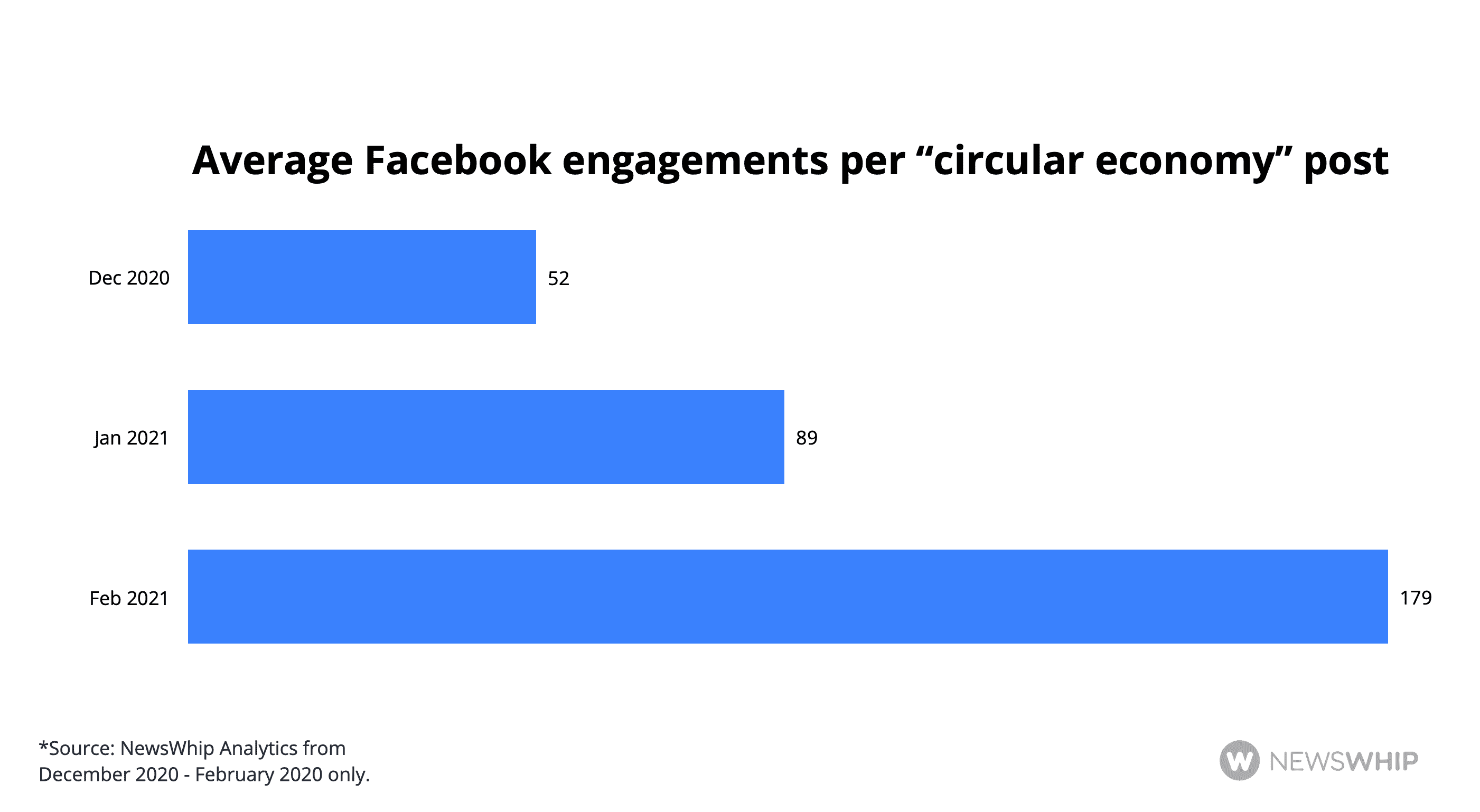
From Recyclability to the Circular Economy
The 2019 youth movement on social issues, particularly centered on millennial-led climate change propelled the brands to take center stage on everything from the usage of gender neutral bathrooms to gun violence, migration, and eco-innovation.
Two years later, the climate change conversation is maturing and identifying waste streams and turning them into new products has become a top priority for entrepreneurs, brands and consumers.
One of this year’s top stories “materialized” from Kenya. Last month, Reuters did a piece on Nzambi Matee, a female entrepreneur with a background in material science. Matee was able to design a process to convert polyethylene and polypropylene, the chemicals commonly used to produce food packaging, into bricks. These bricks, used for construction, are seven times stronger than concrete and also more affordable.

How does she do it? Upcycling. Her company acquires the plastic scraps left over from local factories. This is the waste of the waste, the material that can not be processed and was destined for landfills and local water supplies.
Matee was soon thereafter recognized by the United Nations for her efforts and received the 2020 Young Champions of Earth Sustainability award.
Regrettably, plastic still plays a significant role in our daily life today and according to a study conducted by National Geographic, 91% of plastic is not recycled. Entrepreneurs like Nzami Matee see this as a business opportunity.
What’s ahead for brands
Two months ago, Greta Thunberg announced that she will never buy new clothes again. While I am not sure the world is 100% ready for that, these types of narratives are having an impact on companies and consumers.
The transformation from a linear, brand makes-consumer takes, to a circular economy is progressing in 2021. From Nzambi Matee’s Nairobi-based start-up combating waste pollution with product innovation to retail conglomerates like IKEA that realize it’s not just about investing in solar for the factories or delivering products such as electric vehicles, but it’s about evaluating all parts of business, starting with how you design out waste and pollution.
Identifying the second life opportunities and the byproducts companies create from goods being produced can be good business.
From textiles, food to fabrics, there are always scraps left on the table.
If you’d like to analyze trends like this yourself, check out NewsWhip Spike.





